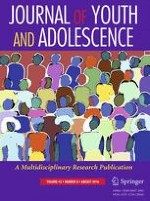22-02-2016 | Empirical Research
The Geography of Normative Climates: An Application to Adolescent Substance Use
Gepubliceerd in: Journal of Youth and Adolescence | Uitgave 8/2016
Log in om toegang te krijgenAbstract
The existing research on risk factors for adolescent substance use highlights the importance of peers’ direct influence on risky behaviors, yet two key limitations persist. First, there is considerably less attention to the ways in which peers shape overall (e.g., school-level) normative climates of attitudes and expectations about substance use, and, second, the role of the broader geographic contexts in which these climates are embedded is essentially neglected. In light of shifting trends in geographic differences in adolescent substance use, the current study uses data from the 2007 Nebraska Risk and Protective Factor Student Survey (n = 26,647; 80 % non-Hispanic White; 51 % female) to (a) explore whether geographic context shapes the character (permissiveness) and consistency (homogeneity) of normative climates and (b) examine the consequences (effects) of such climates on adolescent substance use risk across the rural–urban continuum. Normative climates are a consistent predictor of substance use, yet the geographic context in which schools are located matters for both the nature and influence of these climates, and the patterns differ between normative climates about alcohol and marijuana. These findings illustrate that school normative climates do indeed matter for substance use behavior, and the ways in which they do depend on their broader, geographic context. Thus, future research on youth’s substance use should be attuned to these more nuanced distinctions.
